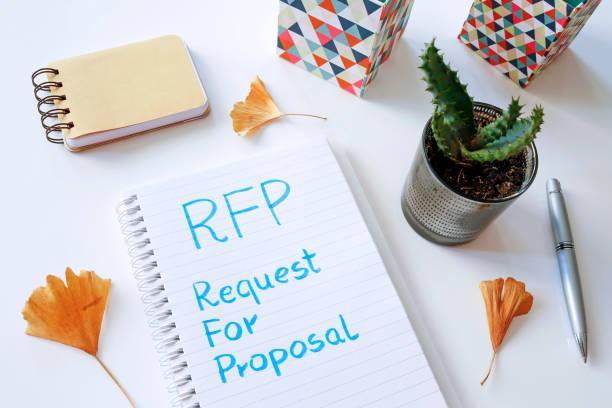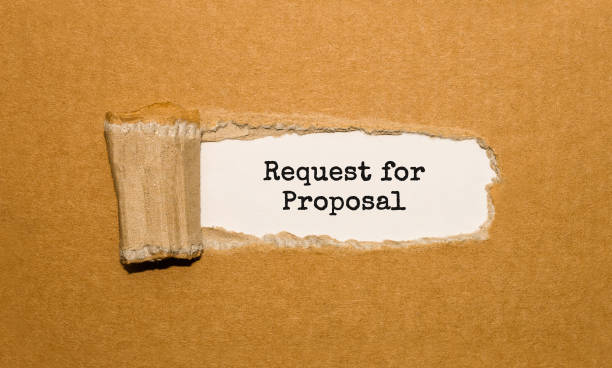
How To Write A Business Proposal?
 10 min
10 min
How To Write A Business Proposal?
It is normal to be anxious about writing a business proposal. Of course, you want to dive into it as soon as possible, but you have no idea how long it should be, what to put in there, or even where to start.
Writing a business proposal doesn't need to be a daunting task. If you soak up all the information in this article, you will already be one step ahead of your competitors. So relax, pour yourself a cup of coffee, and let's do this.
What's in a Business Proposal?
A strong business proposal is a top opportunity to win new business. It is the ultimate sale document, a dense version of all the value your solution brings to your client's problems. In other words,
"A business proposal is a written offer of services tailored to a client."
A winning business proposal can bridge the gap between you and potential clients. It outlines your value proposition and persuades a company or organization to do business with you.
Types of Business Proposal
The business proposal is a document in business writing where a seller aims to persuade clients to buy their goods or services. You do this by identifying your buyer's pain points and providing them the right solution to alleviate those pain points.
There are generally two kinds of proposals:
1. Solicited Proposals
Solicited business proposals are typically requested by a prospective client. Solicited proposals tend to attain a higher win rate because they are more specific to the proposal's person. However, writing a business proposal is a time-consuming task. Therefore, entrepreneurs prefer to stick to solicited proposals.
2. Unsolicited Proposals
Unsolicited proposals are given to potential customers even if they don't request one to gain their business.
Difference Between Business Proposal & Business Plan
It is a common misconception, the terms "business proposal" and "business plan" can be used interchangeably, giving you the impression that they are the same. But they are not. The proposal aims to sell your product or service rather than your business itself. At the same time, a business plan is a "formal statement of business goals" and how these would be achieved. This document can sometimes be included in a proposal.
Business Proposal Outline: What Goes in a Proposal?
A well-written business proposal can often mean the difference between winning or losing a prospective client. In this cut-throat competition, with contracts dwindling, it is more vital than ever to have a standout proposal.
Preparing to Write a Business Proposal: 3Ps of a Winning Business Proposal:
The mantra behind writing a winning proposal is the presence of what I call 3Ps:
-
Problem statement
-
Proposed solution
-
Pricing information
Think of these as the roof, walls, and foundation of your business proposal. Every project is different, but every proposal has the same basic structure. Once get the hook of this structure, you will save time and land more clients. Rather than starting from scratch, you can create a strong proposal which you can customize for every project.
Here are the Key Elements of a Business Proposal and What to Include in each Section:
While it may seem daunting, we will outline a strong business proposal's key stages, styles, and content. Some several helpful tactics and tools will boost your bid and sales strategy. Incorporating these elements will produce winning and more appealing business proposals:
-
Begin with a title page
-
Create a table of contents
-
Executive summary
-
The problem statement
-
The proposed solution
-
Share your qualifications
-
Include pricing, billing, and legal options
-
Clarify your terms and conditions
-
The acceptance
1. Begin with a Title Page
Though it is pretty common to say a compelling business proposal title means the difference between somebody is reading your proposal or your proposal being stacked on top of other untouched proposals.
The essential elements of a compelling title page include:
-
Your name, along with the company's name
-
The date you're submitting the proposal
-
Name of the client or individual you are submitting the proposal to
2. Create a Table of Contents
Your business proposal should be scannable, easy to pick up, and read with a table of contents. If you pitch your product or services to a C-level executive who is pretty busy reading your proposal in one go, adding a table of contents will let your potential client know exactly what is covered in the business proposal. If you send the business proposal through electronic media, create a clickable table of contents that would jump to the different sections of your proposal for easy navigation and reading.
3. Executive Summary
The executive summary is the staple in project plans, annual reports, and even marketing plans. It explains precisely why you are sending the proposal and why your solution is the best for the client.
The goals of your executive summary are:
-
Introduce your company to the prospective buyer
-
Provide an overview of your company goals
-
Showcase your company's milestones, plans, and vision.
-
All the other relevant details
After reading your executive summary, the prospect should get a clear idea of how you can help them.
4. The Problem Statement
It is where you provide a summary of problems impacting your potential client. It offers an excellent opportunity to show them you have a clear understanding of their problems and needs, and you are here to cater to them.
A well-defined problem statement includes two things:
-
It shows the prospect you have done your homework instead of sending a generic pitch
-
It is the best opportunity to highlight a problem your prospect might not be aware they had in the first place.
5. The Proposed Solution
Here is where you offer a comprehensive strategy to solve the problems. Make sure your proposed solution is customized to the client's requirements. Feel free to spare no details concerning the deliverables you will provide, the tactics you will use, and an estimated timeline for when they should expect them.
6. Share your Qualifications
Use this section to communicate why you are perfect for the job. Are you qualified for the client's problem? Why should they trust you? This section is essential because it works as social proof by outlining your team's talent and what your company does best.
7. Include Pricing, Billing, and Legal Options
This step is where things get a bit tricky. Make sure to outline everything from your pricing, payment terms, payment schedule, and legal aspects to this deal.
The mantra of good pricing is to offer your buyers options. Breaking up your pricing is also another hack to show your client what they are paying for.
8. Clarify your Terms & Conditions
This is the section where you put your money where your mouth is. Here, you summarize all the details about what you have promised to deliver. Terms & conditions include:
-
Project timeline
-
Payment methods
-
Payment schedule
This step is very significant as it highlights the legal aspects of the deal. This is why it is essential to be as transparent as possible in the terms and conditions of your proposal.
9. The Acceptance
The final step of this ordeal! Your client has read your proposal, and he is convinced of what you have to offer. In this section, add a small section for all the signatures at the end of the proposal.
Ensure to include your contact information. It acts as a gentle prompt that your prospect can call you anytime.
Business Proposal Examples
Earning more business often starts with a perfect proposal. Creating a winning proposal means writing for the client and providing a clear, valuable solution to their problem. Integrate the most valuable elements of these examples into your customized proposal
1. Digital Marketing Proposal
This proposal is effective because it perfectly fulfills the purpose—it provides a clear, specific solution to the client's problems. The flow and content of this proposal are strong and open, with a value-oriented executive summary.
2. Web Design Proposal
This sample clearly outlines the purpose of implementing the proposed services. Business proposal writers have broken the financials into short terms so the client can understand unit, hourly, and subscription cost. Client specifications are also used to prepare a proposal, making it easier for the reader to know how your solution can solve their problems.
3. Insurance service proposal
It is a simple but effective proposal that covers a range of offerings. The content highlights the company's knowledge of needs and its value proposition. Business writers have made perfect use of white space to allow the reader to skim and find important information.
Final Word
Although almost all proposals present the same information and have the same layout, it's time to make each one unique. Remember, a perfect business proposal must show how you and your company can help a potential client.
Now that you know the tactics of writing a winning business proposal, it is time to go ahead and start writing and creating a masterpiece that gets your client's attention and awards you the contract.









 English
English
 Français
Français
 Deutsch
Deutsch
 Italiano
Italiano
 Español
Español



 Contribute
Contribute








 You can support your favorite writers
You can support your favorite writers





